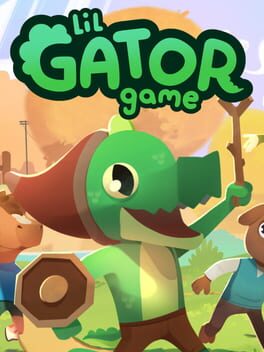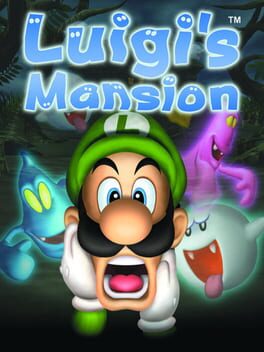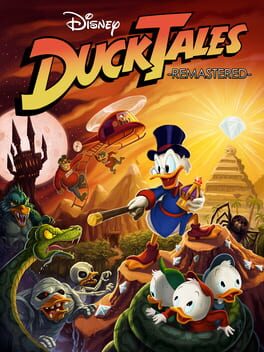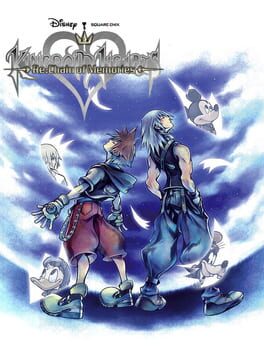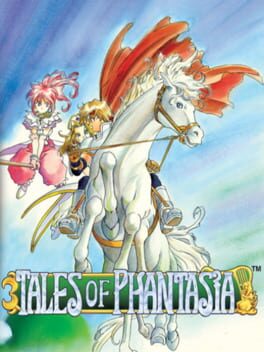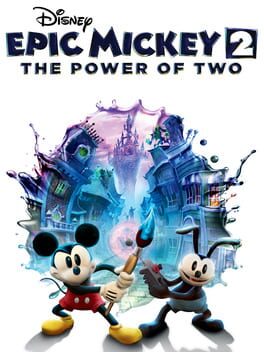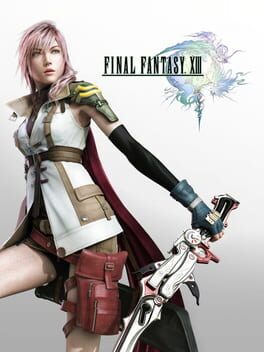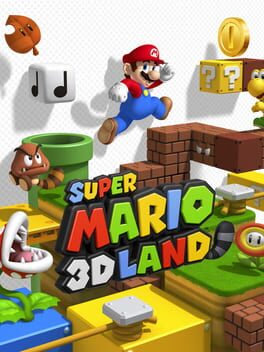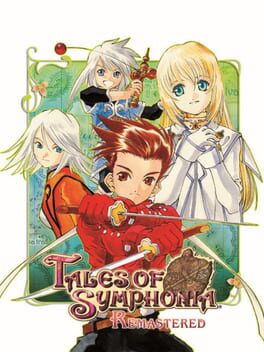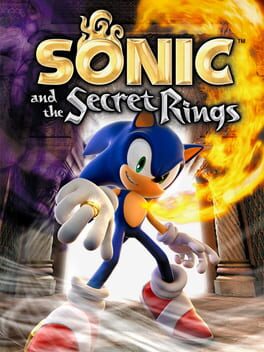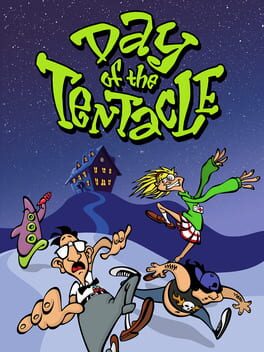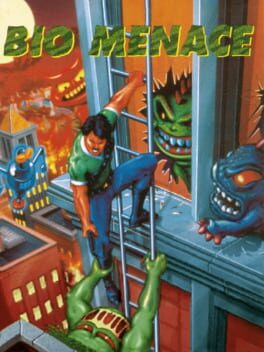ULF
358/2 days offers the best narration of the events between and after chain of memories. For a DS title this game looks astounding and the usage of dual screen for both story segments and ingame is top notch. It's mechanically sound and has a fun panel system for leveling up and optimising your character.
Unfortunately the game is bogged down with a repetive mission structure and some really spongy bossfights. Prepare to play the same world layouts over and over the entire run of the game, with only one exclusive disney world. Towards late game I was praying for the counter to reach 358.
I'd recommend the game for its narrative segments and occasional highlights. There's a few extra character interactions and better context of how the 358/2 events transpires in parallel with Chain of Memories. Some missions and bossfights are decent standouts.
Otherwise..just stick to the movie to avoid the mundane gameplay exhaust.
Unfortunately the game is bogged down with a repetive mission structure and some really spongy bossfights. Prepare to play the same world layouts over and over the entire run of the game, with only one exclusive disney world. Towards late game I was praying for the counter to reach 358.
I'd recommend the game for its narrative segments and occasional highlights. There's a few extra character interactions and better context of how the 358/2 events transpires in parallel with Chain of Memories. Some missions and bossfights are decent standouts.
Otherwise..just stick to the movie to avoid the mundane gameplay exhaust.
2022
2001
No idea how Nintendo managed to conjure this up as a launch title or how they got the idea to merge a Ghost Busters conceptual game starring Luigi, a real oddity title, but it goes to show how new core ideas and innovations can last and only get better with time.
Still plays wonderfully and has that awesome early gamecube era visual charm with great lightning effects and ambience.
Very short and sweet, but always keeps you going towards new sections without holding back with its variety. Every room is a treat of either puzzles, ghost gauntlets, throwbacks, easters and wonders.
A classic and original entry from a very experimental period.
Still plays wonderfully and has that awesome early gamecube era visual charm with great lightning effects and ambience.
Very short and sweet, but always keeps you going towards new sections without holding back with its variety. Every room is a treat of either puzzles, ghost gauntlets, throwbacks, easters and wonders.
A classic and original entry from a very experimental period.
Chain of Memories hosts a unique card system and tells the tale of events that transpired inbetween the two first mainline games.
The main story sequences are boosted from its gba predecessor with both voice acting and great cinematography, while the disney worlds which are mostly recycled story treads only has text dialogues.
While the disney world really feels like simply recaps of what sora went through it works in the context of the story although it can be a bit tiresome if you've already played KH1, the main story is however very awesome and provides more context to what really happened in castle oblivion as well as more explanations of what some of the majour characters are going through, like Riku, Axel and Namine.
As for the gameplay, regardless of its quality, it doesn't leave much room for handholding. There's a few and vague tutorials at the early points of the game and from there on it's your call to call the shots, optimise and experiment your playstyle.
The card system takes a huge precedence over the entire game, and while there are similar mechanics to the mainline series there are rules and limitations that makes the battle system play out very differently.
When you learn how to properly make use of sleights, zero cards and enemy cards, Chain of Memories gameplay can be pretty addictive and satisfying to break through, at least once you clear past its bumpy learning curve.
Here's a few tips and tricks to keep in mind for the journey, as the game itselfs hardly conveys this to you.
-When levelling make sure to not overprioritize only HP.
CP (card points/amount of cards) and sleights are very crucial add-ons for the late game bosses.
-With high CP you can fill your deck with more high number cards and more powerful cards with three zeros tucked away in the very back.
-Dodge rolling is useful against normal attacks, but will rarely save you from enemy sleights as they have trajectory.
- If a boss throws out a sleight, flip backwards in your deck and use a zero. The bosses will each turn permamently lose their primary card in their sleights just like you would.
-Keep the zeroes close to your card shuffler so you can cancel attacks while reloading.
- make sure to check and use enemy cards, they are complete gamechangers.
-when in doubt spam the lethal frame sleight for bosses.
(you'll eventually learn that from the sleights toggle in the level up section)
-Do NOT premium any cards aside from the ones you use in sleights!
The main story sequences are boosted from its gba predecessor with both voice acting and great cinematography, while the disney worlds which are mostly recycled story treads only has text dialogues.
While the disney world really feels like simply recaps of what sora went through it works in the context of the story although it can be a bit tiresome if you've already played KH1, the main story is however very awesome and provides more context to what really happened in castle oblivion as well as more explanations of what some of the majour characters are going through, like Riku, Axel and Namine.
As for the gameplay, regardless of its quality, it doesn't leave much room for handholding. There's a few and vague tutorials at the early points of the game and from there on it's your call to call the shots, optimise and experiment your playstyle.
The card system takes a huge precedence over the entire game, and while there are similar mechanics to the mainline series there are rules and limitations that makes the battle system play out very differently.
When you learn how to properly make use of sleights, zero cards and enemy cards, Chain of Memories gameplay can be pretty addictive and satisfying to break through, at least once you clear past its bumpy learning curve.
Here's a few tips and tricks to keep in mind for the journey, as the game itselfs hardly conveys this to you.
-When levelling make sure to not overprioritize only HP.
CP (card points/amount of cards) and sleights are very crucial add-ons for the late game bosses.
-With high CP you can fill your deck with more high number cards and more powerful cards with three zeros tucked away in the very back.
-Dodge rolling is useful against normal attacks, but will rarely save you from enemy sleights as they have trajectory.
- If a boss throws out a sleight, flip backwards in your deck and use a zero. The bosses will each turn permamently lose their primary card in their sleights just like you would.
-Keep the zeroes close to your card shuffler so you can cancel attacks while reloading.
- make sure to check and use enemy cards, they are complete gamechangers.
-when in doubt spam the lethal frame sleight for bosses.
(you'll eventually learn that from the sleights toggle in the level up section)
-Do NOT premium any cards aside from the ones you use in sleights!
1995
An absolute superb jrpg gem on the SNES! Awesome spritework and one of Motoi Sakuraba's finest OST's melded into an epic tale with fun characters and set pieces set in a large world of awesome dungeons and locales.
Any Tales of fan should play this, just be prepared for high encounter rates, challenging puzzles and bossfights!
Any Tales of fan should play this, just be prepared for high encounter rates, challenging puzzles and bossfights!
1990
Epic Mickey 2 exhibits the same visual finesse and melancholy charm as its predecessor. The cutscenes are gorgeous with lush animations, great voice acting and charmy musicals. Style is the crop of the cream, meanwhile the narrative and plot skips a majour beat without neither being as clever, cute or memorable as its predecessor.
You'll revisit Wasteland, meet the same characters, travel through the same locales and partner up with an ai teamplayer with the intelligence of a drunk gorilla on a tricycle. Most puzzles and many combat situations requires Oswald and while the game isn't in any way challenging, the constant repeats of Oswald just standing there like a clown and saying "I got this!", "let's do this" is in itself the real trivial challenge of the game . You will get lost in obscurity as the game keeps chanting on you with the same voiced dialogues again and again to do random objectives while it makes zero sense of what you're actually supposed to do.
The flow and general game direction in Epic Mickey 2 is the polar opposite of its predecessor.
The original Epic Mickey presented itself with a journey through the Wastelands, a wonderous melancholy world of relics, remnants and throwbacks to lost and forgotten tales. From the beginning you started out with separate levels with alternate choices and while the narrative had more budget constraints, the tale had heart and told a story to embrace old history and accept the new. In Epic Mickey 2 everyone is a fuckwad completely embazzled by the most predictable villain.
The intruiging dark and bittersweet entity of the world is replaced with familiarity and indifference as Mickey and Oswald already know who they're meeting and where they're travelling. There is no real journey, just a bloat with 10 times more of fetch questing and a fraction of platforming levels threwn in at the finale parts and then the game just ends with an underwhelmingly short main story.
Epic Mickey 1 is one of my favourite platformers and it's sad how the sequel which they promised so much from just doesn't strike the same colours.
You'll revisit Wasteland, meet the same characters, travel through the same locales and partner up with an ai teamplayer with the intelligence of a drunk gorilla on a tricycle. Most puzzles and many combat situations requires Oswald and while the game isn't in any way challenging, the constant repeats of Oswald just standing there like a clown and saying "I got this!", "let's do this" is in itself the real trivial challenge of the game . You will get lost in obscurity as the game keeps chanting on you with the same voiced dialogues again and again to do random objectives while it makes zero sense of what you're actually supposed to do.
The flow and general game direction in Epic Mickey 2 is the polar opposite of its predecessor.
The original Epic Mickey presented itself with a journey through the Wastelands, a wonderous melancholy world of relics, remnants and throwbacks to lost and forgotten tales. From the beginning you started out with separate levels with alternate choices and while the narrative had more budget constraints, the tale had heart and told a story to embrace old history and accept the new. In Epic Mickey 2 everyone is a fuckwad completely embazzled by the most predictable villain.
The intruiging dark and bittersweet entity of the world is replaced with familiarity and indifference as Mickey and Oswald already know who they're meeting and where they're travelling. There is no real journey, just a bloat with 10 times more of fetch questing and a fraction of platforming levels threwn in at the finale parts and then the game just ends with an underwhelmingly short main story.
Epic Mickey 1 is one of my favourite platformers and it's sad how the sequel which they promised so much from just doesn't strike the same colours.
2009
Final Fantasy 13 is a game that tosses flexibility out the window and leaves it to you to play it by the rules and conditions it sets for you for a good 3/5 of its content. This really isn't a bad aspect per se, many jrpgs follows the trend of using the same strategies over and over, and to Final Fantasy 13's credit it is more about how you utilise the jobs/roles and making each party member complement each other with buffs, debuffs, enemy staggering, tanking and so on. Which leaves the restrictions even more to shame, since there's only single set paths you can take throughout a very large portion of the game. there is no hp and mp conservation in this game. After every battle you fully reheal with an exception of the tp bar you can easily refill from battle rankings after encounters depending on time duration. Battling is pretty much risk free and if you die, just try again, without any real punishment. The enemy variety is pretty lacking and makes battle strats very repetitious throughout the majority of the game chapters.
The battle encounters still has a nice flow, and the paradigm system works well with combining different character roles/jobs for different situations. Once you have a good rhytm against a large row of enemies it can be really fun and hectic. Boss battles in particular are always a really good highlight and offers cool usages of the paradigm system.
Once you get to the final chapters of the game, you really need to understand the system and respect the assigned roles you give your characters as it could evolve ff 13 to range from one of the easiest to one of the hardest in the series depending on how well you utilise the paradigm system and this is honestly one of the best things about the battle system as good tactical balanced usage of roles really matters.
90% of the game are dungeons, some areas stand out with awesome scenery and multiple paths while others are just literally stretched out corridors that goes on too long.
Redemption and atonement plays a central theme in 13 and the cast of characters all have their own strides and personal conflicts which initially might make a good portion of them seemingly unlikeable, though as the theme goes they do get better and the chemistry of the cast does get pretty heartwarming once the story gets to that point.
Final Fantasy 13 has a fantastic presentation, with a solid english dub and a very catchy soundtrack of which is more what would drive me to go back to the game than the otherwise once and done gameplay structure it so merits.
The battle encounters still has a nice flow, and the paradigm system works well with combining different character roles/jobs for different situations. Once you have a good rhytm against a large row of enemies it can be really fun and hectic. Boss battles in particular are always a really good highlight and offers cool usages of the paradigm system.
Once you get to the final chapters of the game, you really need to understand the system and respect the assigned roles you give your characters as it could evolve ff 13 to range from one of the easiest to one of the hardest in the series depending on how well you utilise the paradigm system and this is honestly one of the best things about the battle system as good tactical balanced usage of roles really matters.
90% of the game are dungeons, some areas stand out with awesome scenery and multiple paths while others are just literally stretched out corridors that goes on too long.
Redemption and atonement plays a central theme in 13 and the cast of characters all have their own strides and personal conflicts which initially might make a good portion of them seemingly unlikeable, though as the theme goes they do get better and the chemistry of the cast does get pretty heartwarming once the story gets to that point.
Final Fantasy 13 has a fantastic presentation, with a solid english dub and a very catchy soundtrack of which is more what would drive me to go back to the game than the otherwise once and done gameplay structure it so merits.
2011
Mario playing it faithfully to a tee in 3D. Levels are short, narrow and platformy very akin to the 2D formula. Awesome variety in level themes per world, very refreshing when one world doesn't span one entire level thematic.
Mario overall feels good to control, though his air momentum can be weirdly over-sensitive at higher velocity and jittery to align with platforms due to the akward depth perception at times, meanwhile the movement acceleration is a bit slow and can make for some unintentional short distance leaps without a support of good sprinting distance.
However, whenever you have the tanooki suit you have the best air mobility in the game which completely breaks the game in half.
This game starts out as a leasurely stroll and turns upside down as you get to the later postgame levels. Many of these are almost par to par rehashes of their original stages with some altered or added obstacles, while others are completely different levels. Fuck the chasing cosmic marios clipping through everything, they were just cheating bulldozers and a bit overutilised. Other than that it's a great and oddly underappreciated mario title, not as high budget and spiced as 3D World, but it's still a high standard 3D platformer, amazing to play on the go.
Mario overall feels good to control, though his air momentum can be weirdly over-sensitive at higher velocity and jittery to align with platforms due to the akward depth perception at times, meanwhile the movement acceleration is a bit slow and can make for some unintentional short distance leaps without a support of good sprinting distance.
However, whenever you have the tanooki suit you have the best air mobility in the game which completely breaks the game in half.
This game starts out as a leasurely stroll and turns upside down as you get to the later postgame levels. Many of these are almost par to par rehashes of their original stages with some altered or added obstacles, while others are completely different levels. Fuck the chasing cosmic marios clipping through everything, they were just cheating bulldozers and a bit overutilised. Other than that it's a great and oddly underappreciated mario title, not as high budget and spiced as 3D World, but it's still a high standard 3D platformer, amazing to play on the go.
1993
It's short, easy, and doesn't reinvent itself beyond the basic platformer formula. But it doesn't need to either. The mechanics are solid and the runthrough of levels feels good. It's a very nice comfort game with a catchy ost and awesome sprites which you most likely can clock in less than 2 hours.
Best game. The remaster is okay, the load times on the overworld really sucks and I resorted to using Noishe as much as possible to avoid encounters, in dungeons the transitions are as snappy as they should be.
Another weird issue is that when entering new areas a few seconds of the tracks are cut out..like..seriously... The remaster also has the same general issues as the ps 2 version. 30 fps cap, looping music after battles and the lack of the awesome blurring effect from the gc version, but it still looks nice enough and the character models have some nice color shadings.
Whenever I want the japanese va this is sufficient, although the gamecube version is easily go to outside of that
This game is a 5 star, but this grading goes to the remastered version, until Namco get their lazy asses up and fix the issues surrounding these versions. The switch version especially..
Edit: apparently they fixed the switch version now so it's apparently on par with the ps 4 edition.
Another weird issue is that when entering new areas a few seconds of the tracks are cut out..like..seriously... The remaster also has the same general issues as the ps 2 version. 30 fps cap, looping music after battles and the lack of the awesome blurring effect from the gc version, but it still looks nice enough and the character models have some nice color shadings.
Whenever I want the japanese va this is sufficient, although the gamecube version is easily go to outside of that
This game is a 5 star, but this grading goes to the remastered version, until Namco get their lazy asses up and fix the issues surrounding these versions. The switch version especially..
Edit: apparently they fixed the switch version now so it's apparently on par with the ps 4 edition.
This game is very easy not to like. It has one of the craziest motion control mechanics grazed on a platformer and Sonic's movement at the beginning course of the game is not great. Slow acceleration, slow jumps, and over sensitive maneuvering becomes intially apparent and it doesn't help that you have to slowly keep unlocking better maneuvering mechanics as well as other beneficial abilities that you won't get until at least midgame unless you decide to replay levels over and over and over, or grind out through exciting filler stages like clear this stage with 0 rings and kill 1 enemy etc.
Once past that treshold it can be a lot more fun to control Sonic, with some fun mechanical depth and a nice sense of flow from your movements. That is to say whenever the level design is up to par, which unfortunately the game leaves a lot to be desired for outside the 7 main stages.
The draw distance also rears its ugly head especially with enemies spawning in a spare centimetres in front of you. There's often not enough time to react or align to what's infront of you, and what's worse is that jumping requires charge up which completely contradicts fast reactions. This and also the fact that you can only slowly walk backwards without any camera aid just makes the entire mechanic trip over itself.
It's just too bad those issues take such a huge precedence, since the motion controls and the flow of the game can be so good when the game gets it right.
There's merits to Sonic and the Secret Rings novelty and sense of style, not to mention the gloriously catchy OST, but that doesn't aid the experience any better when such a huge potential flair lies buried beneath inconsistent design choices.
Once past that treshold it can be a lot more fun to control Sonic, with some fun mechanical depth and a nice sense of flow from your movements. That is to say whenever the level design is up to par, which unfortunately the game leaves a lot to be desired for outside the 7 main stages.
The draw distance also rears its ugly head especially with enemies spawning in a spare centimetres in front of you. There's often not enough time to react or align to what's infront of you, and what's worse is that jumping requires charge up which completely contradicts fast reactions. This and also the fact that you can only slowly walk backwards without any camera aid just makes the entire mechanic trip over itself.
It's just too bad those issues take such a huge precedence, since the motion controls and the flow of the game can be so good when the game gets it right.
There's merits to Sonic and the Secret Rings novelty and sense of style, not to mention the gloriously catchy OST, but that doesn't aid the experience any better when such a huge potential flair lies buried beneath inconsistent design choices.
1993
1993
Man...one of my childhood games right here. At least 1/3 of it since I played the shareware version which was only Episode 1.
Enter Snake Logan, a bearded fellow sporting a pretty basic moveset, he can jump a solid distance, crouch, climb ladders, throw grenades, plant proximity mines and only fire horizontally, but his strength and diversity comes with the hidden powerups you collect, which ups his range and damage. No power up is permanent and if you run out you're stuck with sub-par range and small burst shot with low damage so conservation is key, but also very hard to do since logan is such a huge target with low mobility. This is generally more of an issue amongst a few other thing with part 2 and 3.
There are 3 alternatives for difficulty offering very conveniently easy, normal and hard. The differences mainly being your life-gauge being more minimised the harder mode you pick.
Normal mode halfs you life gauge leaving you with 5 hitpoints, while hard mode gives you 3. Which you seldomly can refill. Whatever you pick you can't change it back once you've made your commitment.
After a rather pleasant voyage through episode 1, the two latter leaves you with a lots of trial and error segments with a good share of falling platforms, hazards, countless pitfalls alongside offscreen projectile enemies you constantly need to expect. You can save for every level and reset stages whenever you want, the flipside to this is that your precious 1-ups permanently runs out. If you hit game over, you won't restock.
I had a rougher time with part 2 due to the more open and mazelike level design, part 3 had mostly linear stages, but were also brutal due to Logan being such a big target against offscreen enemies and some rough bosses. The variety in aestetics and level themes are really good in all of the 3 parts and keeps the game from being visually dull.
I can more easily recommend part 1 as it just right in length and has the most well designed stages. While the two latter parts will really test your merit and patience.
Enter Snake Logan, a bearded fellow sporting a pretty basic moveset, he can jump a solid distance, crouch, climb ladders, throw grenades, plant proximity mines and only fire horizontally, but his strength and diversity comes with the hidden powerups you collect, which ups his range and damage. No power up is permanent and if you run out you're stuck with sub-par range and small burst shot with low damage so conservation is key, but also very hard to do since logan is such a huge target with low mobility. This is generally more of an issue amongst a few other thing with part 2 and 3.
There are 3 alternatives for difficulty offering very conveniently easy, normal and hard. The differences mainly being your life-gauge being more minimised the harder mode you pick.
Normal mode halfs you life gauge leaving you with 5 hitpoints, while hard mode gives you 3. Which you seldomly can refill. Whatever you pick you can't change it back once you've made your commitment.
After a rather pleasant voyage through episode 1, the two latter leaves you with a lots of trial and error segments with a good share of falling platforms, hazards, countless pitfalls alongside offscreen projectile enemies you constantly need to expect. You can save for every level and reset stages whenever you want, the flipside to this is that your precious 1-ups permanently runs out. If you hit game over, you won't restock.
I had a rougher time with part 2 due to the more open and mazelike level design, part 3 had mostly linear stages, but were also brutal due to Logan being such a big target against offscreen enemies and some rough bosses. The variety in aestetics and level themes are really good in all of the 3 parts and keeps the game from being visually dull.
I can more easily recommend part 1 as it just right in length and has the most well designed stages. While the two latter parts will really test your merit and patience.

